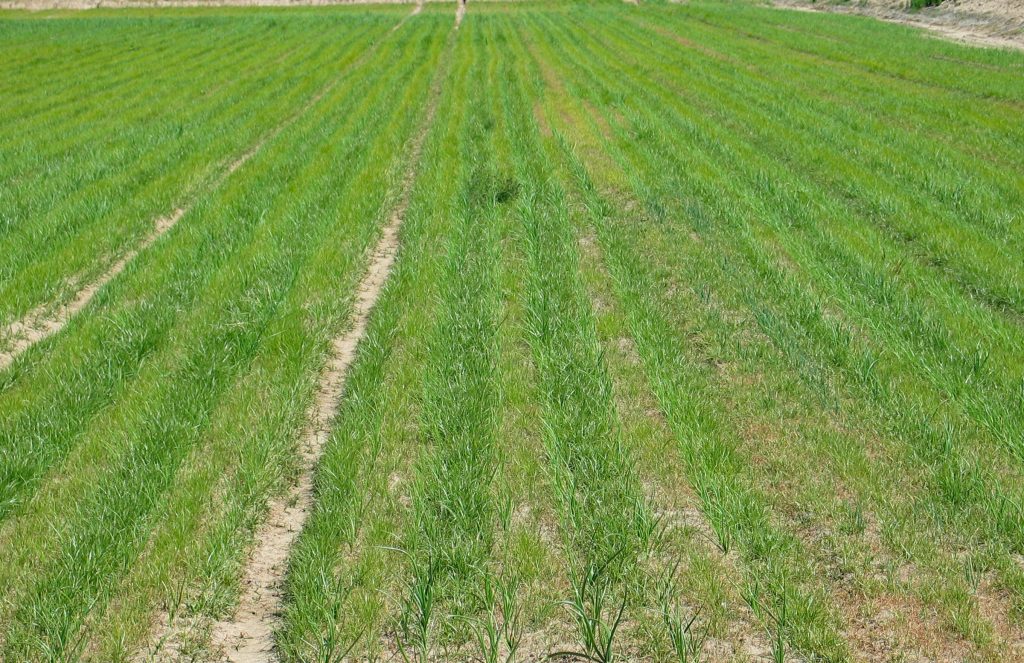Farming as a business presents many challenges and one of them is managing weeds. It is even more so when you are a vegetable or specialty crop grower. Herbicide manufacturers target high acreage crops e.g. corn, soybean, cotton, and wheat, where eventual sales would justify the cost of producing and registering an herbicide. The reluctance to label herbicides in specialty crops is borne in a fear that possible injury could result in a lawsuit that could be very costly to the company. So, tests have to be conducted in order to convince companies that a certain product would not cause injury to, say, onion before a use label could be granted. You cannot blame companies because some vegetable crops can be sensitive to herbicides especially at the early growth stage.
 Figure 1. Yellow nutsedge in direct-seeded onion field near Nyssa, OR after all herbicide options have been applied. Photo by Joel Felix, Oregon State University.
Figure 1. Yellow nutsedge in direct-seeded onion field near Nyssa, OR after all herbicide options have been applied. Photo by Joel Felix, Oregon State University.
So, in certain cases, Special Local Needs (SLN) labels are granted for application to specialty crops when the product will not be very effective. Case in point is the SLN labels for s-metolachlor (Dual Magnum) and dimethenamid-p (Outlook) use to control yellow nutsedge in onion. The labels allow applications to direct-seeded onions starting at the two-leaf stage. But at that stage, yellow nutsedge has already emerged. Remember, these products work best when applied before weed emergence. Consequently, yellow nutsedge has proliferated in eastern Oregon over the years (Figure 1).
What could a grower do differently to turn the tide in heavily infested fields? Well, prevent movement of tubers from the infested field by practicing equipment sanitation and working infested fields last. Importantly, I suggest practicing crop rotations with the sole objective of managing yellow nutsedge on a whole farm system. Avoid short rotation cycles. For example, a rotation comprised of corn/corn/dry beans/wheat/onion could clean up the fields ahead of onion. Corn provides the best herbicide options to manage yellow nutsedge [e.g. Dual Magnum, Outlook, Basagran (bentazon), Yukon (halosulfuron + dicamba), Resolve Q (Rimsulfulron + thifensulfuron)]. What else could be done? Would crop rotation entirely eliminate yellow nutsedge from a field? Likely not. But consistently practicing effective rotation and avoiding using the same product every year would significantly reduce the infestations. It gives a grower a fighting chance to manage yellow nutsedge in onion. Kind of learning to live with the weed without losing yield. Yellow nutsedge, like many other perennial weeds, tends to persist in a field unless deliberately targeted control measures are employed to clean up the field. There is a reason why yellow nutsedge stands almost at the top of the list of the world’s worst weeds; it’s not easy to control! I would like to hear from you on ideas to manage yellow nutsedge in onions.